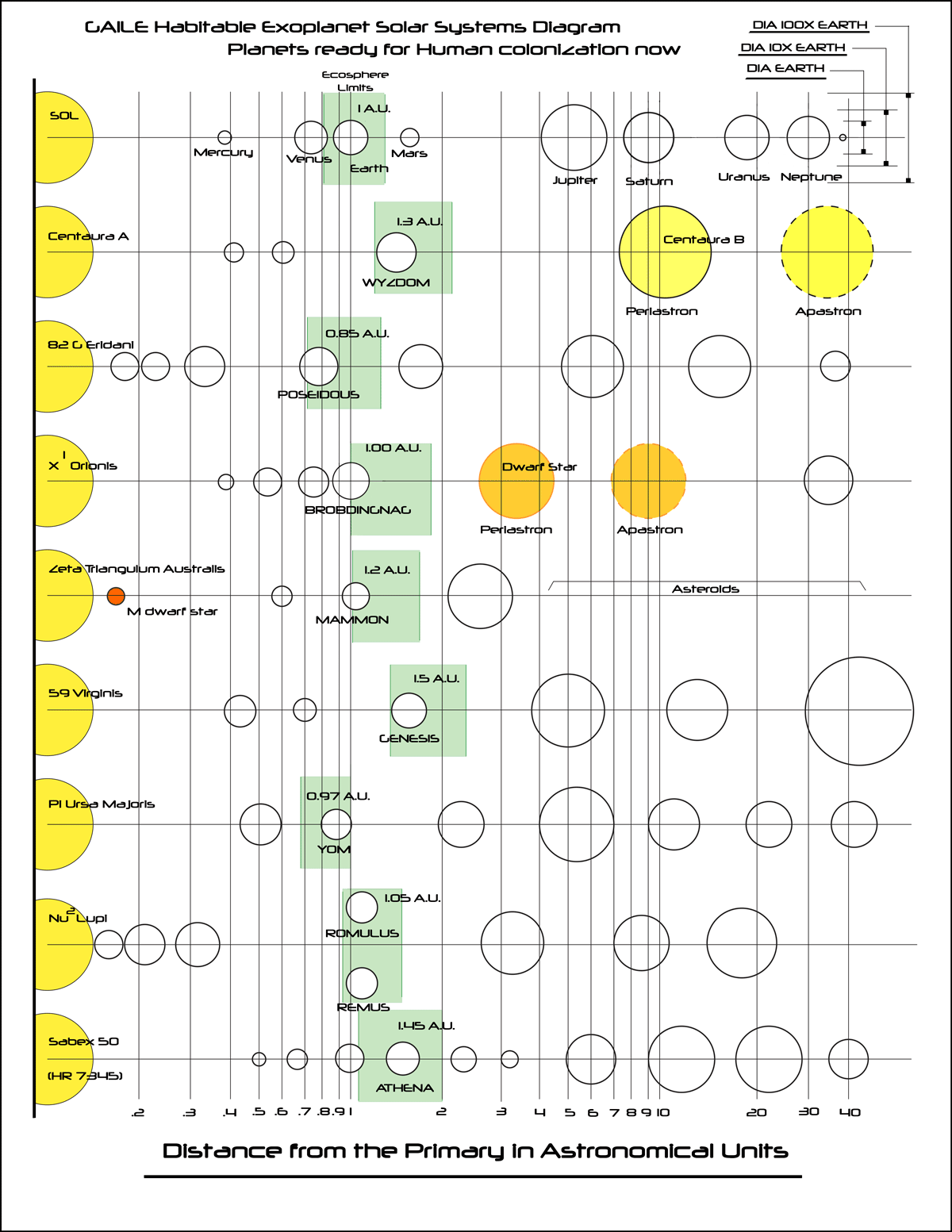Earth-Like Exoplanets
Why would anyone leave the comforts and security of Earth to struggle for survival on an untamed world? In 9,000 years of civilization, life on Earth has grown soft. Humanity has tamed the ravages of nature; the average lifespan has lengthened to 120 years; the work week has shrunk to 30 hours, and hundreds of diversions compete to fill the leisure time. Civilization has brought losses too, both of beauty and opportunity. Few people on Earth know how blue the sky or sea can be, and few have seen the undistorted splendor of the night stars. Just as few know what it is like to create and achieve without securing permission from dozens of their fellows.
Many people feel stifled by this state of affairs, but Earth is too small to afford them any relief. They dream of a world in which they can own land, explore uncharted wilderness, discover new species, look upon untamed vistas, and breathe clean, fresh air. Exoplanet Colonies offer all this and much more to those who are willing to work hard and who crave freedom and opportunity. They offer a clean slate on which to inscribe a new society; one boasting the advantages of the knowledge gained during the last 9,000 years while escaping the social prejudices and political controls unavoidable in modern life.
General Characteristics of GAILE Habitable Exoplanets
| Earth | Wyzdom | Poseidous | Brobdingnag | Mammon | Genesis | Yom | Romulus | Athena | |
| Planet Diameter (X Earth’s diameter) | 1.00 | 1.14 | 1.11 | 1.04 | 0.78 | 1.01 | 0.88 | 0.91 | 0.96 |
| Gravity at surface (X Earth g) | 1.00 | 1.27 | 1.18 | 1.07 | 0.69 | 1.01 | 0.82 | 0.87 | 0.94 |
| Atmosphic pressure at mean sea level (Earth atmospheres) | 1.00 | 1.81 | 1.32 | 1.12 | 0.34 | 0.55 | 0.70 | 0.77 | 1.05 |
| Fraction of surface covered by land (%) | 29 | 26 | 1.5 | 19 | 48 | 21 | 35 | 29 | 24 |
| Obliquity (degrees) | 23.5 | 18 | 2 | 15 | 5 | 27 | 36 | 19 | 21 |
| Length of Day (Earth hours) | 24 | 13.3 | 19.6 | 14 | 22.1 | 12 | 26.9 | 44 | 25.2 |
| Length of year (Earth days) | 365 | 526 | 310 | 360 | 460 | 591 | 347 | 412 | 635 |
| Distance from primary (astronomical units) | 1 | 1.30 | 0.85 | 1.00 | 1.20 | 1.50 | 0.97 | 1.05 | 1.45 |
| Mass of primary (X mass of Earth’s sun) | 1 | 1.06 | 0.85 | 1.03 | 1.09 | 1.29 | 1.01 | 0.91 | 1.01 |
| Distance from earth (light years) | – | 4.37 | 19.7 | 28.26 | 39.5 | 57 | 46.8 | 48.3 | 82.77 |
Table 3.1.001 GAILEarth Colonizable Exoplanets – Similarities to Earth
It is hard to generalize about the Association colonies, although a few generalizations can be made before beginning the descriptions of each. As Table 3.1.001 readily illustrates, each bears many important physical similarities to Earth. Those similarities reflect the basic conditions needed for Human life to flourish.
Figure 3.1.001 shown below presents a visualization of the GAILE habitable exoplanets and their respective extra solar systems. Of course each exoplanet falls within the ‘habitable zone’ necessary for human life to exist as shown in the illustration and shaded green.

Figure 3.1.001 – GAILE Habitable Exoplanet Solar Systems Diagram
The planets shown above are ready for Human colonization now. For more detail and information about each exoplanet, start by selecting the appropriate planet link shown in the menu items below.
Home
> PIONEERING PROGRAM
> Introduction
> Life on the Planets
> Overview
> Wyzdom
> Poseidous
> Brobdingnag
> Genesis
> Mammon
> Yom
> Romulus
> Athena
> Interstellar Transportation and Communications
> Physics of Space Travel
> Modular Starships
> Interplanetary Communications
